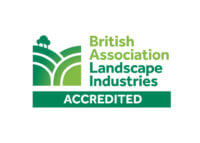Is enriched topsoil suitable for flower beds and borders?
Nov 25th 2023
If you’re an avid gardener or simply looking to enhance the beauty of your outdoor space, you may have considered using enriched topsoil for your flower beds and borders. But before you jump on the bandwagon, it’s important to understand if this type of soil is truly suitable for your gardening needs. In this article, we’ll explore the benefits of enriched topsoil and delve into whether it’s the right choice for your flower beds and borders. So grab a cup of tea, sit back, and let’s get gardening!
Benefits of Enriched Topsoil
Introduction to Enriched Topsoil
Enriched topsoil is a valuable resource for gardeners looking to create vibrant and healthy flower beds and borders. It is specifically formulated with a nutrient-rich composition that promotes optimal plant growth and development. By incorporating enriched topsoil into your gardening routine, you can enhance the fertility of your soil, improve drainage and water retention, and ultimately create a thriving ecosystem for your beloved flowering plants.
Enhanced Drainage and Water Retention
Enriched topsoil not only provides plants with essential nutrients but also improves the soil’s drainage and water retention capabilities. This is particularly important for flower beds and borders, as excess water can lead to root rot and other moisture-related issues. The well-balanced composition of enriched topsoil allows water to flow freely through the soil while also ensuring that it retains enough moisture for the plants to thrive. This balance provides an ideal environment for root growth and helps prevent waterlogged conditions that can harm your flowering plants.
Considerations for Flower Beds and Borders
Compatibility with Flowering Plants
Before using enriched topsoil in your flower beds and borders, it is important to consider the compatibility of the soil with your chosen flowering plants. While enriched topsoil generally supports a wide range of plants, it’s always beneficial to research the specific needs of your plants to ensure optimal results. Some flowering plants may require specific soil pH levels or prefer certain types of soil compositions. By understanding the needs of your plants, you can select the suitable enriched topsoil blend that will provide them with the necessary nutrients and conditions for healthy growth.
Effects on Soil pH
Enriched topsoil can have an impact on the pH level of your soil, which can affect the overall health and growth of your flowering plants. Most plants thrive in a slightly acidic to neutral soil pH range. It is important to monitor the pH of your soil regularly, especially after incorporating enriched topsoil. If the pH becomes too acidic or alkaline, you may need to make adjustments by adding soil amendments or using specific fertilizers to restore the ideal pH balance for your plants. Regular soil testing can help you identify any necessary adjustments to maintain optimal pH levels for your flower beds and borders.
Preventing Nutrient Imbalances
While enriched topsoil provides an abundance of nutrients, it is important to prevent nutrient imbalances in your flower beds and borders. Over-fertilization can lead to excessive nutrient levels, which can negatively impact plant growth and overall health. It is essential to follow the recommended application rates provided by the enriched topsoil manufacturer or consult with a gardening expert to avoid overloading the soil with nutrients. Regular soil testing can also help you monitor nutrient levels and make any necessary adjustments or amendments to ensure a balanced and healthy soil ecosystem.
Applying Enriched Topsoil
Preparing the Flower Bed
Before applying enriched topsoil to your flower bed, it is important to prepare the area properly. Start by removing any weeds, rocks, or debris from the bed. Loosen and aerate the existing soil to create a favorable environment for root growth. This can be done using a garden fork or tiller. Once the bed is cleared and aerated, you can proceed with applying the enriched topsoil.
Incorporating Enriched Topsoil
When incorporating enriched topsoil into your flower bed, it is recommended to spread a layer of the soil evenly over the prepared area. Depending on the depth of the flower bed, a layer of enriched topsoil between 4 to 6 inches should be sufficient. Use a garden rake or shovel to distribute the soil evenly, ensuring that it reaches all corners of the bed. This will provide an even distribution of nutrients and help establish a balanced growing environment for your flowering plants.
Mixing with Existing Soil
In some cases, it may be necessary to mix the enriched topsoil with the existing soil in your flower bed. This is particularly important if your existing soil lacks essential nutrients or has poor texture and drainage. Mixing the enriched topsoil thoroughly with the existing soil will help create a consistent growing medium throughout the bed. Use a garden fork or tiller to blend the soils together, ensuring that the enriched topsoil is evenly distributed. This will provide a balanced and fertile soil environment for your flowering plants.
Best Practices for Flower Beds and Borders
Regular Soil Testing
To maintain healthy flower beds and borders, regular soil testing is crucial. Testing the soil annually or biennially can provide valuable insights into the nutrient levels, pH balance, and overall soil health. Soil testing kits are readily available and easy to use, enabling you to monitor and adjust the soil conditions accordingly. By understanding your soil’s composition and making informed decisions, you can create an optimal growing environment for your flowering plants.
Appropriate Plant Selection
Choosing the right plants for your flower beds and borders is essential for their long-term success. Consider the specific environmental conditions of your garden, such as sunlight exposure, moisture levels, and soil type. Select plants that are well-suited to these conditions and compatible with the soil amendments you plan to use. Proper plant selection enhances the overall health and longevity of your flower beds and borders, making maintenance easier and ensuring a stunning display of blooms.
Proper Watering and Mulching
Proper watering techniques are vital for the health of your flowering plants. Overwatering or underwatering can stress the plants and hinder their growth. It is important to water deeply and infrequently, allowing the top inch or two of soil to dry out between waterings. Mulching the flower beds and borders with organic materials, such as bark chips or straw, can help conserve moisture, suppress weeds, and regulate soil temperature. Mulching also adds organic matter to the soil as it breaks down, contributing to long-term soil health and fertility.






